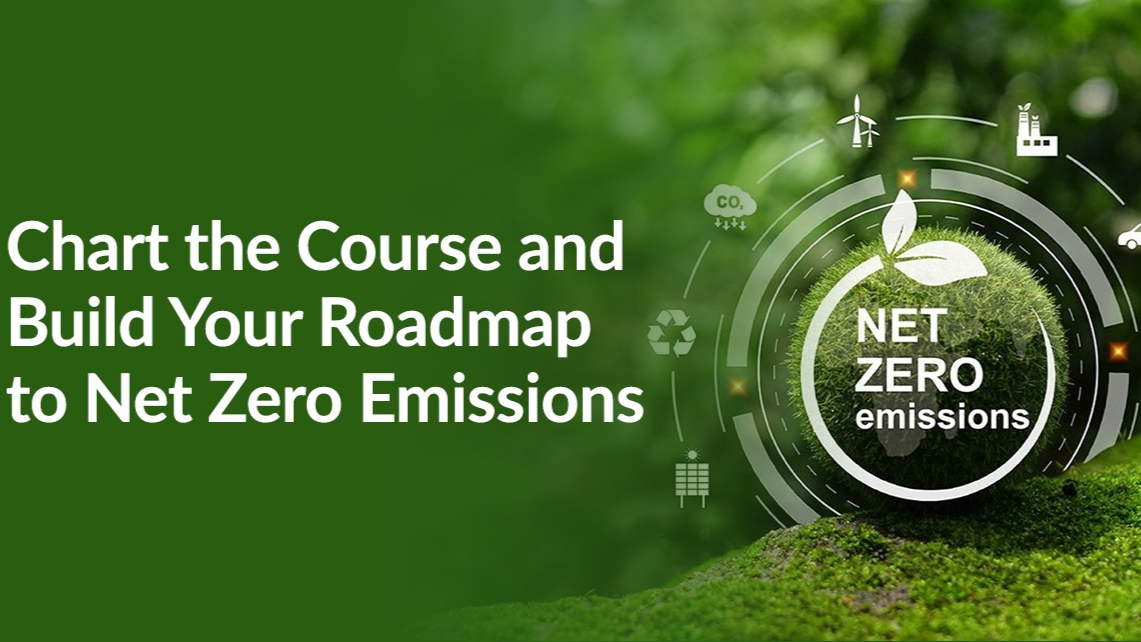In today’s climate-conscious business landscape, achieving net zero emissions has become a critical goal for companies across the globe. Net zero emissions mean balancing the amount of greenhouse gasses emitted into the atmosphere with an equivalent amount removed, resulting in a net zero impact on the climate. As pressure mounts from stakeholders and regulators alike, how can your organization navigate this complex terrain? This comprehensive guide outlines key strategies and best practices to help you build a robust roadmap to net zero.
1. Understand the Stakes
The urgency of climate action can’t be overstated. Climate change poses significant risks to businesses, from supply chain disruptions to shifting consumer preferences. By pursuing net zero, companies aren’t just mitigating risks—they’re positioning themselves as leaders in the low-carbon economy. Moreover, they’re contributing to the global effort to limit warming to 1.5°C above pre-industrial levels, as outlined in the Paris Agreement.
2. Set Science-Based Targets
Ambitious yet achievable targets form the cornerstone of any successful net zero strategy. The Science Based Targets initiative (SBTi) offers a framework for setting goals aligned with the latest climate science. By establishing short-, medium-, and long-term targets, you’ll create a clear trajectory for your net zero journey.
3. Conduct a Comprehensive Emissions Audit
To create an effective roadmap, you need a clear understanding of your current emissions. Conduct a comprehensive emissions audit to identify sources of greenhouse gas emissions across your operations, including Scope 1 (direct emissions), Scope 2 (indirect emissions from purchased energy), and Scope 3 (indirect emissions from your value chain). The Greenhouse Gas (GHG) Protocol provides a robust framework for this crucial step.
4. Develop a Detailed Action Plan
With your emissions profile in hand, it’s time to craft a detailed action plan. Consider these key areas:
- Energy Efficiency
Implement energy-saving measures in buildings, manufacturing processes, and transportation.
- Renewable Energy
Transition to renewable energy sources such as solar, wind, and hydropower.
- Sustainable Practices
Adopt sustainable practices in procurement, waste management, and resource use.
- Innovation and Technology
Invest in emerging technologies such as carbon capture and storage (CCS) or green hydrogen.
5. Engage Stakeholders
Achieving net zero isn’t a solo endeavor—it requires buy-in from across your organization and beyond. Communicate your goals transparently and regularly to employees, customers, suppliers, and investors. Foster a culture of sustainability by involving employees in climate initiatives and rewarding innovative ideas.
6. Monitor, Measure, and Report Progress
What gets measured gets managed. Establish key performance indicators (KPIs) to track your progress and use advanced data analytics to identify areas for improvement. Transparent reporting using frameworks like the Task Force on Climate-related Financial Disclosures (TCFD) and the Carbon Disclosure Project (CDP) can enhance your credibility and inspire others to follow suit.
7. Offset Remaining Emissions
While reduction should be your primary focus, some emissions may prove unavoidable. For these, invest in high-quality carbon offset projects. Whether it’s reforestation, renewable energy initiatives, or methane capture, ensure your chosen projects are verified and certified by reputable organizations.
8. Foster Continuous Innovation
The path to net zero isn’t static—it requires ongoing adaptation and improvement. Stay abreast of emerging technologies, best practices, and regulatory changes. Cultivate a culture of continuous improvement, regularly reviewing and updating your strategies. Collaboration with industry peers, research institutions, and NGOs can keep you at the forefront of climate action.
9. Advocate for Climate Policy
Your impact can extend beyond your organization’s walls. Engage with policymakers, participate in industry associations, and support initiatives that promote climate action. By advocating for favorable policies, you’re helping to create an ecosystem conducive to achieving net zero emissions.
10. Celebrate Milestones and Share Successes
Finally, celebrate your milestones and share your successes with stakeholders. Recognize and reward the efforts of employees and partners who contribute to your net zero journey. Sharing your achievements can inspire others to take action and demonstrate your commitment to sustainability.
The road to net zero emissions is undoubtedly challenging, but it’s also ripe with opportunity. By setting clear targets, engaging stakeholders, and fostering innovation, you’re not just future-proofing your business—you’re positioning it as a leader in the sustainable economy of tomorrow.
The future is low-carbon, and the time to act is now. Are you ready to chart your course to net zero?


